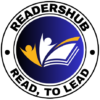Project-based learning is an educational approach that engages students in exploring real-world problems and challenges. As teachers, it’s our job to create engaging and meaningful learning experiences for our students. In this guide, we will discuss ways to maximize project-based learning in the classroom and provide students with an interactive and immersive experience. From incorporating digital tools to identifying effective assessment strategies, this guide will give you the resources and information you need to ensure your students get the most out of project-based learning.

What is Project-Based Learning?
Project-Based Learning (PBL) is a student-centered instructional approach that engages learners in authentic, relevant, and challenging projects or tasks that enable them to apply their knowledge, skills, and attitudes to solve real-world problems or address complex issues. In PBL, students work collaboratively in groups or teams to investigate, plan, design, implement, and evaluate solutions to authentic problems, challenges, or tasks that require critical thinking, creativity, and communication skills. PBL projects may involve different disciplines or subjects, and they may incorporate various forms of assessment, including self-assessment, peer assessment, and teacher assessment. PBL aims to enhance students’ engagement, motivation, and achievement, as well as their communication, collaboration, and problem-solving skills. It also promotes lifelong learning and prepares students for the complex challenges of the 21st century.
Advantages of Project-Based Learning
Project-Based Learning is a highly effective teaching methodology that offers many benefits for students. Some of these advantages include:
1. Promotes Critical Thinking:
In Project-Based Learning, students are encouraged to analyze problems, evaluate different perspectives, and make informed decisions. By actively participating in a project, students can develop their critical thinking skills, which are essential for success in any field.
2. Enhances Collaboration:
Project-Based Learning involves group work, where students work together to solve a problem. This enhances collaboration skills and allows students to share their knowledge and ideas, which leads to a deeper understanding of the subject.
3. Fosters Creativity:
In Project-Based Learning, students have the freedom to explore their own interests and ideas, which fosters creativity. Students are encouraged to use their imagination to come up with innovative solutions to problems, which can lead to breakthrough ideas and innovations.
4. Engages Students:
Project-Based Learning is a highly engaging teaching methodology that motivates students to learn. When students are involved in a project, they take ownership of their learning, which increases their interest and engagement.
5. Real-World Applications:
Project-Based Learning has real-world applications, which makes it relevant and meaningful to students. Students can see how what they are learning in the classroom can be applied to real-life situations, which enhances their understanding and retention of the subject.

Guidelines for Implementing Project-Based Learning
1. Define the Learning Objectives
Before starting with a project, it is essential to have a clear understanding of what you want students to achieve. Therefore, it is important to identify learning objectives that the project will focus on.
2. Allow Student Choice
When students are given the freedom to choose the topic or problem they want to address, they are more engaged in the project and tend to take more ownership of the learning process.
3. Provide Resources and Support
Ensure that students have access to the necessary resources such as books, videos, and other materials. Teachers should also be available to support and guide students throughout the project.
4. Use Real-World Context
Projects should be designed around real-world issues or challenges, giving students an opportunity to apply their skills and knowledge in meaningful and relevant ways.
5. Emphasize Collaboration
Working collaboratively with peers is an essential part of project-based learning. Teachers should encourage teamwork, facilitate group discussions and problem-solving, and help students develop communication and collaboration skills.
6. Encourage Reflection
At the end of a project, students should be encouraged to reflect on what they learned and how they grew. This reflection helps them to take ownership of their learning and reinforces the skills and knowledge they gained.
By following these guidelines, teachers can help students maximize their learning potential through project-based learning. Projects can be fun and engaging for both teachers and students, making it an effective teaching strategy that can be applied across various subjects.
Conclusion
Incorporating project-based learning in the classroom can significantly enhance the learning experience for students. By following the guidelines discussed in this guide, teachers can maximize project-based learning to engage students in deep, meaningful learning experiences that prepare them for the real world. From nurturing students’ critical thinking and problem-solving skills to encouraging creativity and collaboration, project-based learning helps students become independent, lifelong learners. So, start incorporating project-based learning in your classroom today, and watch your students flourish!


This is informative and educative. I am blessed with this write-up.
Thanks.
Project based learning is very important because it increase learner’s critical thinking and makes them to be more creative. Hence, every 21st century teachers must incorporate it into teaching and learning.
I definitely agree with your submission. Educators should introduce more engagement for students in class with projects. It could be individual or group project.
This is indeed a great way to learn. But in order to make Project -Based Learning meaningful, educators must be ready to give directions and assistance to the learners when required.
Project -based learning should be encouraged by educators. It is a great way to learn.
Yes, you are right about this, Daniel. Thanks for your contribution.
Project based learning should be practiced and encouraged by teachers/educators in other to allow students to be creative and give them the ability to work together 👌
Hmmn…. Niceee!!!